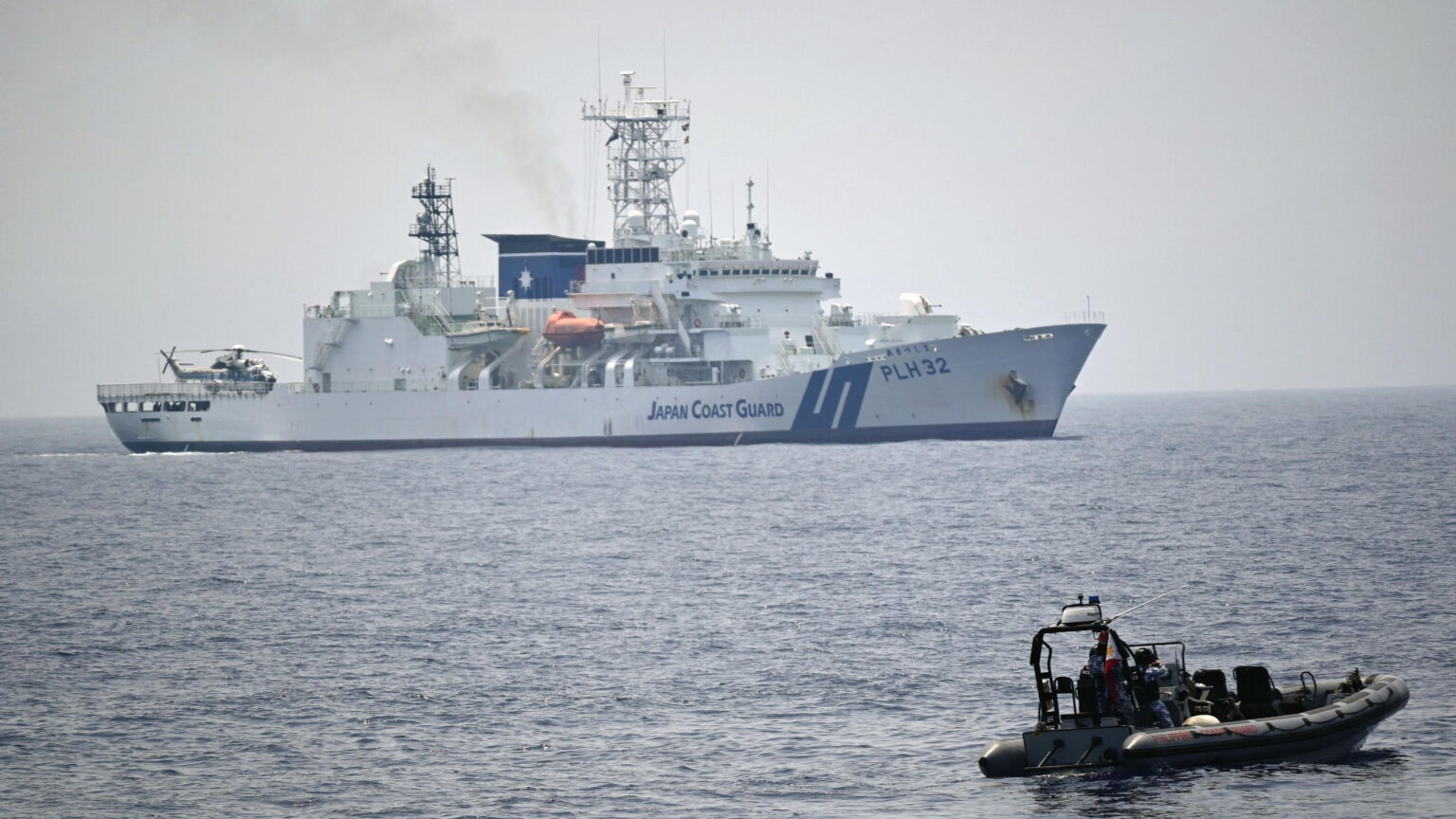TOKYO/WASHINGTON — The U.S., Japan and the Philippines plan to coordinate security strategies in the East China Sea and South China Sea and discuss opportunities to stage regular joint exercises under plans announced Friday, aiming to bolster deterrence against potential Chinese aggression in the region.
National security advisers Jake Sullivan of the U.S., Takeo Akiba of Japan and Eduardo Ano of the Philippines met for the first time in Tokyo, agreeing to produce a formal strategy document by year-end.
The joint exercises would be held in Indo-Pacific waters “in support of freedom of navigation, and the broader rules-based order,” a readout said.
Japan affirmed that it will support enhancing the military capabilities of the Philippines and others through official security assistance (OSA) — a new aid framework launched in April for providing defense equipment.
The national security advisers “concurred that a free and open maritime order, characterized by freedom of navigation, and a free, fair, and equitable economic order are essential in the Indo-Pacific, especially given unilateral attempts to change the status quo by force or coercion,” the readout said. They “reiterated the importance of peace and stability across the Taiwan Strait.”
Japan called for a framework for regular three-way security discussions. The strategic document to be completed by the end of 2023 will focus on improving air- and sea-based deterrence and response capabilities in the East and South China seas. It will lay out plans for regular large-scale joint exercises in the South China Sea.
The countries will also explore the possibility of joint exercises in the East China Sea — home to the Japanese-controlled Senkaku Islands, which are claimed by China as the Diaoyu.
Japan’s Self-Defense Forces and the U.S. military will help the Philippine military improve its proficiency as well as its equipment and unit interoperability.
While cooperating in peacetime, the countries will strengthen their ability to jointly handle a crisis by sharing emergency strategies to an extent. Their coast guards will step up joint exercises to help handle situations like a foreign vessel intruding into territorial waters — a possible prelude to a major crisis.
China’s navy and its paramilitary coast guard have repeatedly made advancements in the East China Sea near the Senkaku Islands and are increasing the size and armament of their ships.
It has engaged in similarly provocative actions in the South China Sea, where it is embroiled in territorial disputes with the Philippines, and where it has also militarized artificial islands it has constructed.
China calls the area from Japan’s southern islands to Taiwan and the Philippines the “first island chain” and positions it as a key military point for weakening the ability of the U.S. and others to get involved from the Pacific Ocean in the event of a crisis in the Taiwan Strait.
Japan and the Philippines, both U.S. allies, are geographically close to Taiwan and face a similar threat.
Until now, Japan and the U.S. have been involved in separate efforts to increase security cooperation with the Philippines, providing equipment and engaging in bilateral exercises. Their coast guards began their first trilateral exercises on June 1 in the South China Sea.
The development into a three-country framework was due partly to the political situation in the Philippines. President Ferdinand Marcos Jr., who took office in June 2022, shifted from the pro-China course of predecessor Rodrigo Duterte and moved to mend ties with the U.S.
The Philippines agreed in February to give American forces access to four more sites, bringing the total to nine. The agreement is said to include a facility in the northern part of Luzon Island, which is close to Taiwan, making it easier for the U.S. to deploy to the front in a Taiwan crisis. The move is in line with the American military’s strategy of deploying troops along the first island chain.
“Japan can support the cost of developing infrastructure in the Philippines that can be used by the U.S. military,” said Ken Jimbo, a professor in Keio University’s Graduate School of Media and Governance. “OSA should be actively utilized,” he said.
Jimbo argues that Japan and the Philippines should expedite the signing of an acquisition and cross-servicing agreement, which facilitates the exchange of fuel and other goods, and a reciprocal access agreement, which promotes bilateral security cooperation by simplifying procedures for port calls and exercises, for example. These agreements would better position Japan’s Self-Defense Forces to not only provide humanitarian assistance and disaster relief, but also carry out surveillance in the South China Sea.
The U.S., Japan and the Philippines must work together to push back against “China’s growing assertiveness in regional waters,” argued a report released in February by the Washington-based Center for Strategic and International Studies think tank.
“For Washington, there is no viable strategy for countering China’s illegal behavior in the East and South China Seas without robust cooperation with Tokyo and Manila, respectively,” CSIS senior fellow Gregory Poling and colleagues wrote.
The Philippines “needs to build up its political, economic, and military readiness if it is to coordinate effectively in an allied response” to a Taiwan crisis, the report said.
The report also noted a possible gap in the sense of urgency about a Taiwan crisis between the Philippines and the other two countries.
“Japan has a key role to play in helping expand Philippine perspectives on Taiwan, and — together with the United States — could socialize further thinking on what role the Philippines would play in a Taiwan contingency,” it said.
Japan and the U.S. are building a multilayered security framework to strengthen China deterrence. On June 3, the two countries’ defense ministers met with their Australian and Philippine counterparts in Singapore for the first time. The talks included initiatives like combined maritime patrols in the South China Sea.
Source : NikkeiAsia

